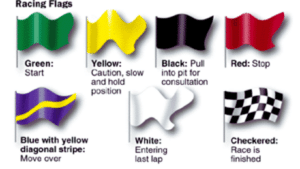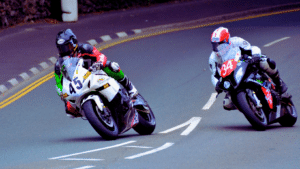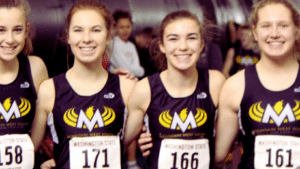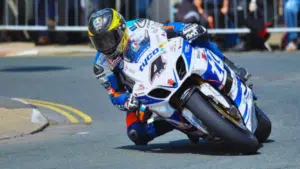Motorcycle racing is a thrilling sport that requires skill, speed, and precision. It is also a sport that is governed by a strict set of rules and etiquette guidelines. These rules and guidelines are in place to ensure the safety of all riders and to promote fair competition.
In this blog post, we will explore the basics of motorcycle racing etiquette, including:
- Understanding racing flags
- Sportsmanship in motorcycle racing
- Code of Conduct on the track
Understanding Racing Flags
Racing flags are used to communicate with riders during a race. Riders must be familiar with the different racing flags and their meanings in order to race safely and effectively.
Some of the most common racing flags include:
- Green flag: The green flag signals the start of the race.
- Yellow flag: The yellow flag signals caution. Riders must slow down and be prepared to stop if necessary.
- Red flag: The red flag signals a stoppage of the race. Riders must immediately come to a stop.
- Black flag: The black flag signals that a rider has been disqualified from the race.
- Checkered flag: The checkered flag signals the end of the race. The first rider to cross the finish line with the checkered flag flying wins the race.
Sportsmanship in Motorcycle Racing
Sportsmanship is essential in motorcycle racing. Riders must be respectful of their fellow riders, the race officials, and the spectators.
Some examples of good sportsmanship in motorcycle racing include:
- Passing safely and cleanly.
- Giving other riders room to race.
- Not blocking other riders.
- Not making contact with other riders intentionally.
- Congratulations to the winner of the race.
Code of Conduct on the Track
The racing code of conduct is a set of guidelines that all riders must follow. The racing code of conduct is designed to promote safety and fair competition.
Some of the most important points in the racing code of conduct include:
- Riders must obey all race officials’ instructions.
- Riders must ride in a safe and responsible manner.
- Riders must avoid making contact with other riders intentionally.
- Riders must not cross the finish line before the checkered flag is flown.
- Riders must respect their fellow riders, the race officials, and the spectators.
Conclusion
Motorcycle racing etiquette is important for ensuring the safety of all riders and promoting fair competition. By following the rules and guidelines of motorcycle racing etiquette, riders can help to create a positive and enjoyable racing environment for everyone involved.










